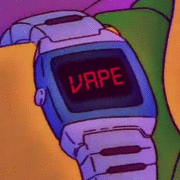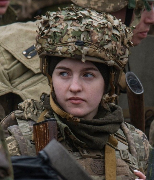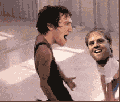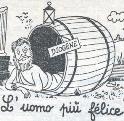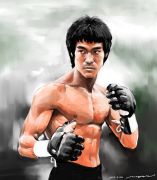|
The cameras with a fixed ~40mm are a lot more reasonable than the wider ones IMO. I like that Ricoh does both for the GR line. If someone did a dedicated 50 fixed pocket cam I'd be tempted. There are wide and long adapaters for the Fuji X100 line, but I've never really heard any real impressions about their quality.
|
|
|
|

|
| # ? May 3, 2024 18:13 |
|
The wide angle conversion lens for the X100 series works fine I guess. No way itís as nice as a prime 28mm equivalent on a full frame or 18mm on a crop sensor, but it gets the job done. Mostly I donít like the 28mm focal length and itís been kind of a waste of money for me
|
|
|
|
Bottom Liner posted:The cameras with a fixed ~40mm are a lot more reasonable than the wider ones IMO. I like that Ricoh does both for the GR line. If someone did a dedicated 50 fixed pocket cam I'd be tempted. General Photography Questions 4 - Instead of the X100VI consider the Olympus 35SP
|
|
|
|
I did the same thing last year (beginning photography on a trip) and id recommend starting before hand. I shot on auto pretty much the whole time and the photos are mid (they're great as far as holiday snaps go but have no artistic value). Learn the exposure triangle and some basics about framing at the very least. I'm going to Japan again later this year and will be taking a fully manual film set up and a mirrorless with manual lenses and I reckon the photos will be way better.
|
|
|
|
Get a Fuji Cardia Mini Elite OP, it's a point and shoot but with a 28 and a 45. It is film tho
|
|
|
|
JAY ZERO SUM GAME posted:don't go to japan thinking you'll get camera deals. the yen prices have inflated accordingly. some things might be a little cheaper, and tons of little accessories will probably be cheap, but lenses/bodies/etc., the big lifts, will be priced similarly. Öused seems to be tracking around where it has always been. Maybe a touch higher for some things, but that can be more ďFujifilm is in demandĒ since Iíve spotted some screaming deals for other systems. It canít have fully adjusted because then you price out the locals, too. Not like pay has gone up to match. Source: been in Japan over a decade.
|
|
|
|
A friend who lives there offered to pick some things up for me when he comes to visit, so I looked around; it didnít look like I was saving much on new items from the usual suspects But yes, used is always a better option for just about any camera equipment, and as I mentioned, itís especially a good idea in Japan. Iím sure those remain excellent deals
|
|
|
|
Iím sure a variation of this has been asked in here many times. I apologize if itís redundant. I do a lot of volunteer photography for my kidsí school district and I want to build a website to host photos for people to download highish resolution for free. Where are the alternatives to Google photos and dropbox? Dropbox doesnít have a nice viewing interface and Google photos is unnecessarily complicated to download full resolution from what Iíve heard from some parents.
|
|
|
|
Brrrmph posted:Iím sure a variation of this has been asked in here many times. I apologize if itís redundant. I do a lot of volunteer photography for my kidsí school district and I want to build a website to host photos for people to download highish resolution for free. Pixieset is a good hosting/viewing option with Lightroom integration. There's a free tier where you can churn out collections. Password Protection and Download PIN and Analytics on there -- you can even hook it up to a print service and have on-demand printing.
|
|
|
|
Awesome. Thanks. I will check it out.
|
|
|
|
Pryce posted:So I've got a trip to Japan coming up in April, and I've decided this is a great opportunity to get into photography, a secret desire I've always had. Immediately on starting research I learned about the X100VI and fell in love with its design and ease of traveling with it, but obviously this is not a camera you can just go buy on a whim given how tough it'll likely to be to find at launch. Follow-up to this! I ended up going over to a local shop (Precision Camera in Austin, if that means anything to anyone). Intent was just to ask a bunch of questions and play around with some options....and then instead I walked out with a used XT-5 and XF 16-80mm lens. Am I immediately part of the cool club of 'spent way too much money on a first purchase'? (In fairness, the sales rep was insanely nice, patient, and offered no-questions-asked returns within the next month while also tossing in some extra free batteries, charger, and a nicer strap). Anyway, excited to go run around this weekend taking bad photos; also signed up for a course on manual photography to get the basics down. Thanks again for all the help and ideas!
|
|
|
|
Nah that's a perfectly good starter kit for the world of real cameras. Walking out with a medium format would be the spent too much money option.
|
|
|
|
X-T5 is a great camera, and the 16-80 is a very good starter kit - has a bit more reach so very good if you canít zoom with your feet. Thatíll be very good for a trip. Now just take time on your trip to stop by Roppongi to only go by Fujifilmís headquarters and do nothing else 
|
|
|
|
The last few months I've taken a break from digital and I've been mainly shooting film. I feel like something is off in my understanding of ISO between digital and analog. Might anyone have a good resource on the differences? I tried looking around on Google but all I can find are basic guides like "ISO goes in full stops" and "high ISO on digital is bad", etc..
|
|
|
|
Film ISO is a measure of how sensitive to light the stock is, and is part of the chemical process of manufacturing/developing film. Digital iso is boosting the sensitivity of the digital sensor by cranking the gain similarly to increasing exposure on the raw file in software(or literally the same if youíre on an ISO invariant camera). Think of it as a volume knob on a stereo, complete with the fuzz and noise you get when you go too far. You get more volume but a less clear signal. They act very diffferently in practice for a few reasons. Pushing and pulling film is very different than increasing iso when shooting or increasing exposure on a raw file because itís a chemical process vs electronic one.
|
|
|
|
Bottom Liner posted:Film ISO is a measure of how sensitive to light the stock is, and is part of the chemical process of manufacturing/developing film. quote:They act very diffferently in practice for a few reasons. Pushing and pulling film is very different than increasing iso when shooting or increasing exposure on a raw file because itís a chemical process vs electronic one.
|
|
|
|
Maybe this is what you want: https://youtu.be/fnNJkPaMkuM?si=NbATcmKJ8Yw1xKmp Of course it ain't free. But his lessons are highly regarded from anyone I've seen talking about them
|
|
|
|
huhu posted:The last few months I've taken a break from digital and I've been mainly shooting film. I feel like something is off in my understanding of ISO between digital and analog. Might anyone have a good resource on the differences? I tried looking around on Google but all I can find are basic guides like "ISO goes in full stops" and "high ISO on digital is bad", etc.. Something like this? https://www.learnfilm.photography/how-to-film-grains-work-with-photos/
|
|
|
|
I think these are both great, thank you. Fake edit: $200, ahhhh. I did get sucked into another video of his someone shared here and drat, I love his stuff. Might have to commit.
|
|
|
|
huhu posted:The last few months I've taken a break from digital and I've been mainly shooting film. I feel like something is off in my understanding of ISO between digital and analog. Might anyone have a good resource on the differences? I tried looking around on Google but all I can find are basic guides like "ISO goes in full stops" and "high ISO on digital is bad", etc.. What exactly is "off" with your understanding? I had struggled with film speed, because all I read was things like "shoot at half box speed", and "meter for the shadows". What was lacking was a quantitative explanation. "Beyond the Zone System" by Phil Davis opened my eyes. This articles gives a very quick snapshot as well: https://casualphotophile.com/2019/10/28/zone-system-film-test-speed-calibration/
|
|
|
|
Sensitometery aside, the higher the ISO rating of the film the larger the physical size of the silver halide grains present in the emulsion. Larger crystals = greater chance of intercepting a photon and the entire crystal being reduced to metallic silver during development. This implies faster films will have a more pronounced grain structure compared to a film of lower ISO. There are also differences in the geometry of the halide crystals found in various films. 'T-grain' films like TMax and Ilford Delta tend to have crystals that are flatter and less clumpy than traditional emulsions which in turn affects qualitative aspects of the image. Very fast films like P3200 and Delta 3200 make use of this fact to maximize the cross section of the halides thereby maximizing speed (and graininess). In terms of exposure and using films at other than 'box speed', reading up on the Zone System is a good recommendation. Combined with proper development you can fine-tune the results to suit your needs.
|
|
|
|
Looking for a recommendation. What's a decent compact digital camera I can grab for like...$300 or less? That would be better than just sticking with an iphone 12. Mostly would just use it for casual/street photography and I don't always want to rely on a phone for that
|
|
|
|
That's basically a Ricoh GR II .txt
|
|
|
|
I've heard a lot of good stuff about the Lumix GX800 and Olympus E-M5. Going to be more like $500 for body + lens used but decent cameras for $300 that are also compact enough to be pocketable is going to be tough to find. You'd probably have to get lucky with a local deal.
|
|
|
|
I think the Ricohs are going to run more than $300. A Canon PowerShot G15 or so would be in reach though. Image quality should still be better than your iPhone, but itís older, less capable cameras youíre looking at for that kind of money. Hereís a whole lineup you can wade through: https://www.mpb.com/en-us/category/used-cameras/premium-compact-cameras?sort[productPrice]=ASC Most manufacturers have something decent on offer, itís a matter of figuring out what features are most important to you.
|
|
|
|
nitsuga posted:I think the Ricohs are going to run more than $300. The 10mp ones are all about $299 on eBay. That's the 2017 model but they definitely hold up well.
|
|
|
|
theHUNGERian posted:What exactly is "off" with your understanding? I think I finally have a good tangible example. I just got this roll developed, it's Portra 160 on a Pentax K1000 shot at F2 and either 1/30" or 1/60". To me it seems kind of insane just out wide the range of ISO 160 is. I'm almost positive the light meter would have told me I needed a much higher ISO. I didn't write down what the meter actually read, just pushed my camera, lens, and film to their limit in low light. ... Or maybe I'm just much more forgiving of grain on a 50 year old camera compared to my new Nikon Z5. Edit: Just found this in the article you linked. So I guess that's what I was looking for as an explanation to this post. quote:Color Negative Film Ė Color negative is basically Zone System on easy mode. Modern color negative film has tremendous exposure latitude on the side of over-exposure. However, like black-and-white film, under-exposure is bad news. Under-expose your image and shadows will appear muddy with increased grain and color shifts. 
huhu fucked around with this message at 21:13 on Mar 10, 2024 |
|
|
|
You didn't have to push the film speed there because you properly exposed that scene with aperture and shutter speed. It's insane when you're used to digital dynamic range though. Film in general does have wider DR and handles being under/overexposed better. The highlights don't immediately go hot white, the roll off is much nicer, etc.
|
|
|
|
Itís really hard to remember to not underexpose film for me because Iím so used to digital sensors that will blow the highlights out.
|
|
|
|
huhu posted:Edit: Just found this in the article you linked. So I guess that's what I was looking for as an explanation to this post. The quote is not wrong, but try to get the higher level explanation. The thing with exposure latitude is that it depends on the film curve AND the scene. For example, imagine a film that can capture 5 stops of dynamic range. This film will have tremendous exposure latitude if your scene only has 1 stop of dynamic range. On the other hand, a film with 13 stops of dynamic range will have very little room for error with a scene that has 13 stops of range. "Beyond the Zone System" takes a deep dive on this topic and is an excellent read. theHUNGERian fucked around with this message at 14:59 on Mar 15, 2024 |
|
|
|
that's a great book
|
|
|
|
huhu posted:I think I finally have a good tangible example. I just got this roll developed, it's Portra 160 on a Pentax K1000 shot at F2 and either 1/30" or 1/60". To me it seems kind of insane just out wide the range of ISO 160 is. I'm almost positive the light meter would have told me I needed a much higher ISO. I didn't write down what the meter actually read, just pushed my camera, lens, and film to their limit in low light. ... Or maybe I'm just much more forgiving of grain on a 50 year old camera compared to my new Nikon Z5. That looks correctly exposed to me. My best guess as to why a modern camera would fail with this scene is in the meter. I have found most digital camera meters to do an area-weighted average of a scene. The end result is that a scene that has 90% black shadows and 10% highlights (such as you scene) will be overexposed and suddenly the pitch black shadows are gray. My guess is that you metered this correctly - by measuring the brightest highlight, the deepest shadow, and taking an average of the two. theHUNGERian fucked around with this message at 01:29 on Mar 15, 2024 |
|
|
|
Any recommendations for a "Lightroom but for music" software? Looking for a software where i can catalogue my music files *Must be compatible with FLAC *Must be able to edit file metadata so that i can get a good structure in iTunes *Being able to export the files from FLAC to MP3 is also a requirement i think? (I don't think iPhone supports FLAC) I don't need to be able to edit the music in the files or anything. Have tried googling the topic and found results, but not sure they are what i am looking for. All the results are from music forums/reddits and i am getting the impression many of the answers were from users that had to google what Lightroom was. Many of the suggestions seems to be music editing software rather than cataloguing software. I figured i'd ask photographers that knows what Lightroom is instead
|
|
|
|
Ineptitude posted:Any recommendations for a "Lightroom but for music" software? I use musicbee for bulk renaming and tagging etc, not sure if it will transcode stuff for ya (I use wavosaur plus lame enc for that)
|
|
|
|
I've got a Nikon Z5 + 24-120 F4. I've been trying to focus in low light situations and it's been pretty painful. From my reading, I think it's the F4 lens to blame? Is that correct?
|
|
|
|
huhu posted:I've got a Nikon Z5 + 24-120 F4. There's a limit to how much light an f/4 lens can let in, true, but the Z5 has a decent reputation for autofocus, and f/4 should be enough for at least good enough performance. What are the circumstances, what kind of AF are you using (single point, etc...)
|
|
|
|
torgeaux posted:There's a limit to how much light an f/4 lens can let in, true, but the Z5 has a decent reputation for autofocus, and f/4 should be enough for at least good enough performance. What are the circumstances, what kind of AF are you using (single point, etc...) 1 photograph a portrait after the sun went down, inside, with just the street lights for light. 2 a fireworks parade after dark How would af type impact things?
|
|
|
|
huhu posted:The circumstances were Single point, center point is usually the most sensitive/accurate (physically more sensitive on DSLRs). Continuous AF can cause misses, too. Are you using eye detection? For the portrait, I mean? torgeaux fucked around with this message at 01:24 on Mar 16, 2024 |
|
|
|
One of the compromises with the Z5 is that its low-light performance is the worst of the full-frame Z cameras. It's rated for -2EV with an f/2 lens attached, going to -3EV with Low Light Autofocus enabled, roughly the same as a D750. A Z6 is rated to -4EV and -6.5EV in normal and low-light AF modes respectively; similarly the Z7 is rated to -3EV and -4EV. Double-check if low-light AF is enabled for these situations, and going back to AF-S may help as well (annoyingly only AF-S gives you the green box for focus confirmation for the 1st-gen Z cameras.) You might need to manually override focus, which is easier with mirrorless cameras, or get a faster lens.
|
|
|
|

|
| # ? May 3, 2024 18:13 |
|
Sounds like I need to go experiment with my camera and probably pick up a wider aperture prime lens. Thanks for the wisdom.
|
|
|










